Dog lead helps to keep your pet controlled, prevents him from running away, running into the road, run over other dogs.
It is important to start puppy training to a leash in time. Usually dog training to a leash begins since 2 months of puppy age. 2 months old puppies do not clearly understand what do they like or not. That's why they get used to a dog lead quite quickly, though, exceptions happen.
The first experience is usually negative. A puppy tries to take a lead off, chew and tear it. Some dogs may just sit or lay down and deny to walk forward, while others jump and go crazy irritated by a new device.
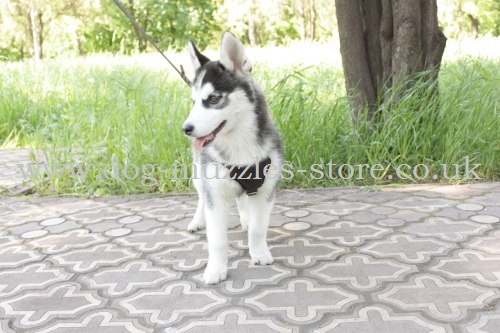
The tips for puppy training to a lead
Start from puppy training to a dog collar. Choose a light and soft dog collar for your puppy. As soon as a puppy gets used to a dog collar, start adjusting a dog lead. Do not fasten a dog collar tight. There should be a gap of two fingers between a neck and a collar.
Leather dog collars collection
Dog lead should be slightly hanging. Do not pull it to be tightly stretched to make a puppy move by force. It is not recommended to leave a puppy walking at home with a hanging lead attached but without your guiding. A puppy may chew a lead apart, be afraid of a strange thing following him or get entangled with a lead rope.
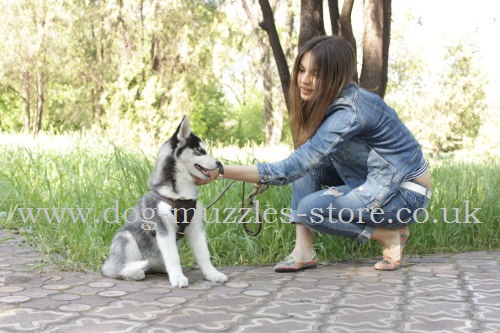
Attach a dog lead to a collar for some minutes and walk a puppy at home. If a puppy tries to take it off or chews it, distract his attention with a treat, a dog toy or game. If a puppy is irritated and nervous, unfasten a leash only when he fully calms down.
A lead is attached to a puppy collar daily. Gradually a puppy gets used to a lead and owners give less treats and games letting a puppy understand that dog walking on a leash is a usual thing.
If a dog denies walking on a leash when you go out, keep standing for a while and then go back home. Gradually start to step out from your puppy for a small distance. He will start walking at least for a curiosity.
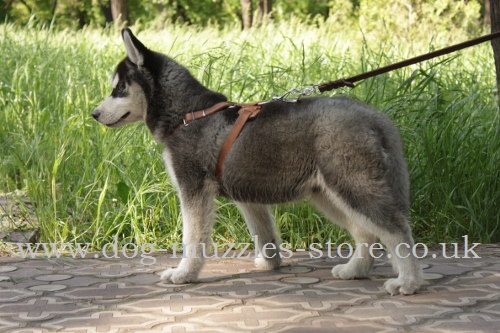
When you start puppy training to a leash, do not allow him to pull you behind. A dog should understand that an owner is leading him, not vice versa. This rule especially touches upon dog training to a leash of large dog breeds.
Puppy walking should not take much time: count it's duration by about 5 minutes X each 4 weeks of puppy age.
If a dog is pulling, make a sharp pull but carefully, not to hurt a puppy. You may need to repeat such actions several times, but do it carefully.
It is unacceptable to pull a lead when a dog fights back. A dog will feel fear and training will be difficult and long.
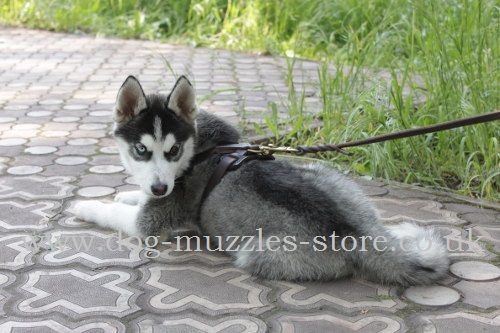
It is important to be insistent. You may just stop and wait for a while, make a lead shorter and show a puppy that he is to walk behind. A dog will understand that he cannot pull an owner who is not moving. Praise a dog with a treat and caress for his right actions and good behavior.
If a dog distracts and moves aside, pull it into the right direction and command "No!/Stop!" in a strict but calm voice. It may be any command, but note, that dogs perceive sibilant sounds better. It is important to have the eye contact with a dog at the moment of command.
If a dog is hyperactive, runs, jumps and does not obey an owner while walking outside, pulls and is curious to everything around, do not walk too far with him. Go back home following the same route you have come. Usually puppies are less curious to the same route walking back. They calm down, are more obedient and attentive with the owner.
If you are walking a dog on a long lead, train it come to you at the first call. When a puppy comes, praise him with a treat. But do not overfeed your dog.
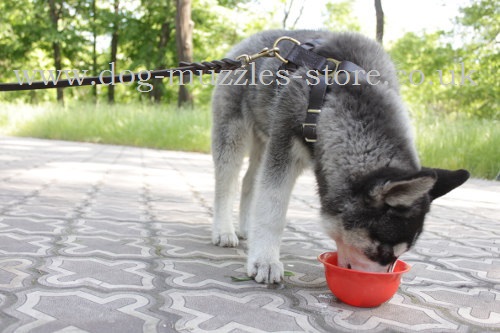
Important! Do not caress, embrace, give a treat to a puppy if he disobeys and whines. It is important to ignore undesired behavior. Otherwise a dog will treat it as a promotion and feel such behavior as the correct one.
If you feel lack of patience or unsure to succeed, get the help of professionals. But your puppy will need many lessons in his life, that are to be taught by his owner directly. We wish you patience and consistence to take the responsibility to train an obedient, well-bred dog.
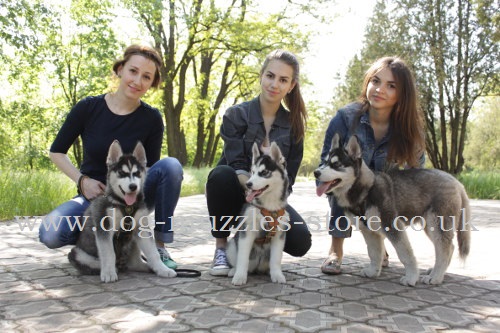
Choose a top quality dog lead for your pet from our rich collection of leather dog leads or nylon dog leashes.